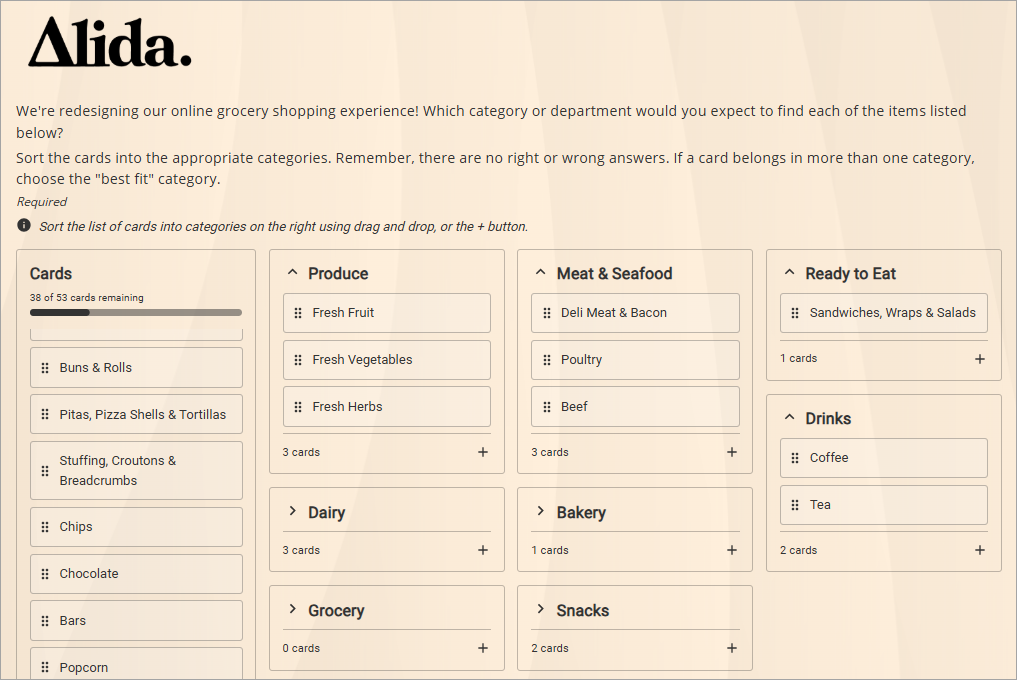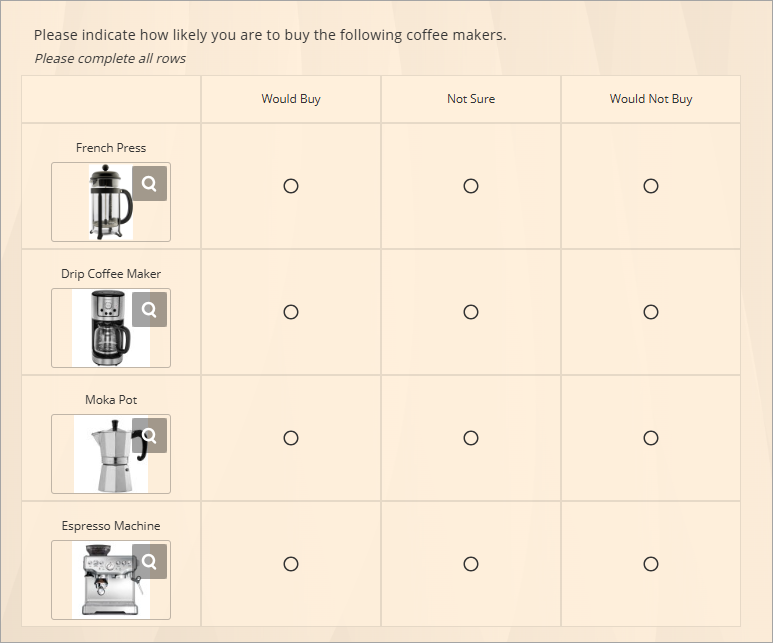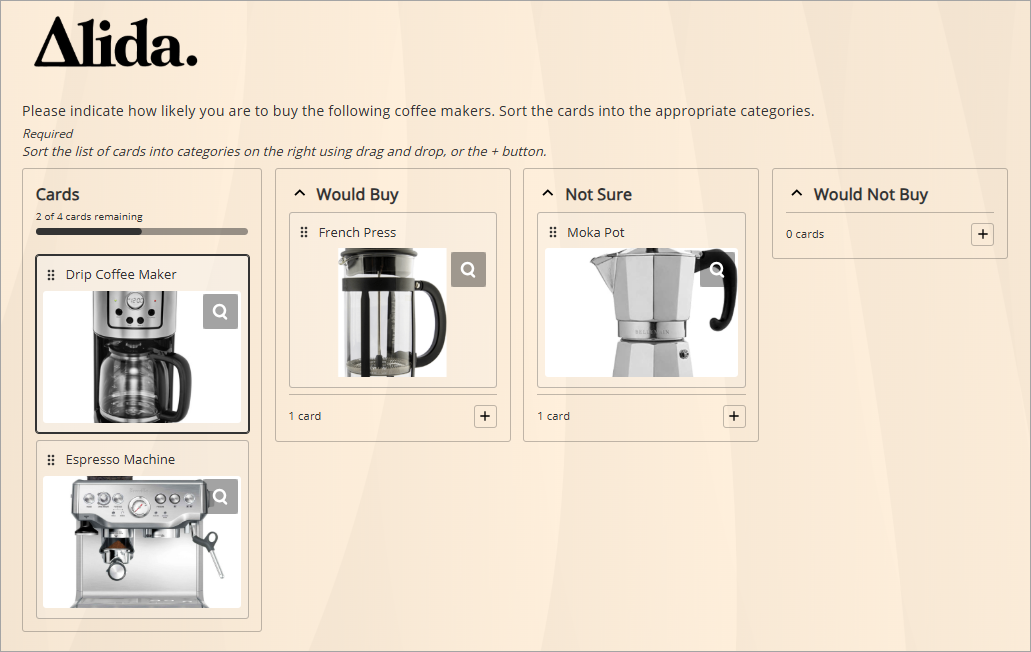Card Sort questions in modern surveys
Learn more about Card Sort questions, their benefits, and the different participant experiences that Card Sort questions in modern surveys can offer.
Overview
Card sorting is a research method used to learn how users categorize information and inform the design of user-friendly and intuitive information architecture. In a Card Sort question, participants group individual ideas displayed on cards into categories. Participants organize the cards in a way that makes sense to them in relation to how they would navigate a website or app. The resulting groups are used to inform content structure, navigation, and workflows that align with user expectations.
- Understand users' mental models: Card sorting reveals how users think about, understand, and group information in your product.
- Develop effective information architecture: Card sorting helps create intuitive navigation, menus, and content organization to make it easier for users to find what they need and prevent confusion/frustration.
- Practice user-centered design: Card sorting ensures that a product's structure aligns with user expectations, not designer assumptions.
Closed Card Sort
A closed Card Sort question asks participants to sort cards into pre-defined categories. The cards can display images, text, or both. Participants add cards by dragging and dropping them into the categories. Alternately, they can click the plus buttons on the categories to add a card. They can also collapse and expand categories while they sort. There is no option for participants to create and name their own categories.
Sample modern view:

Alternative to Single Choice Grid
Card Sort questions are ideal for usability testing. Aside from usability testing though, you can use Card Sort questions to present traditional Single Choice Grid questions in a different format. Dragging and dropping cards into categories is a nice change of pace in the middle of a survey, particularly if you've already used multiple Single Choice Grid questions in a row.
For example, here is a Single Choice Grid question that asks participants how likely they are to purchase different types of coffee makers:

Here is the same Single Choice Grid question presented as a Card Sort question:

